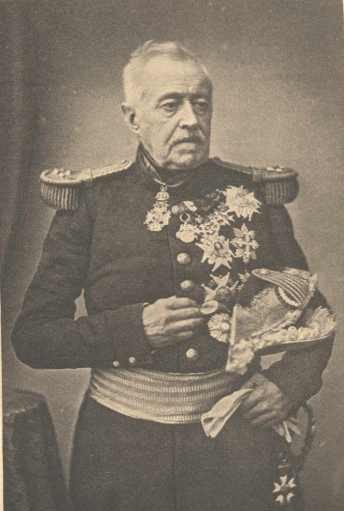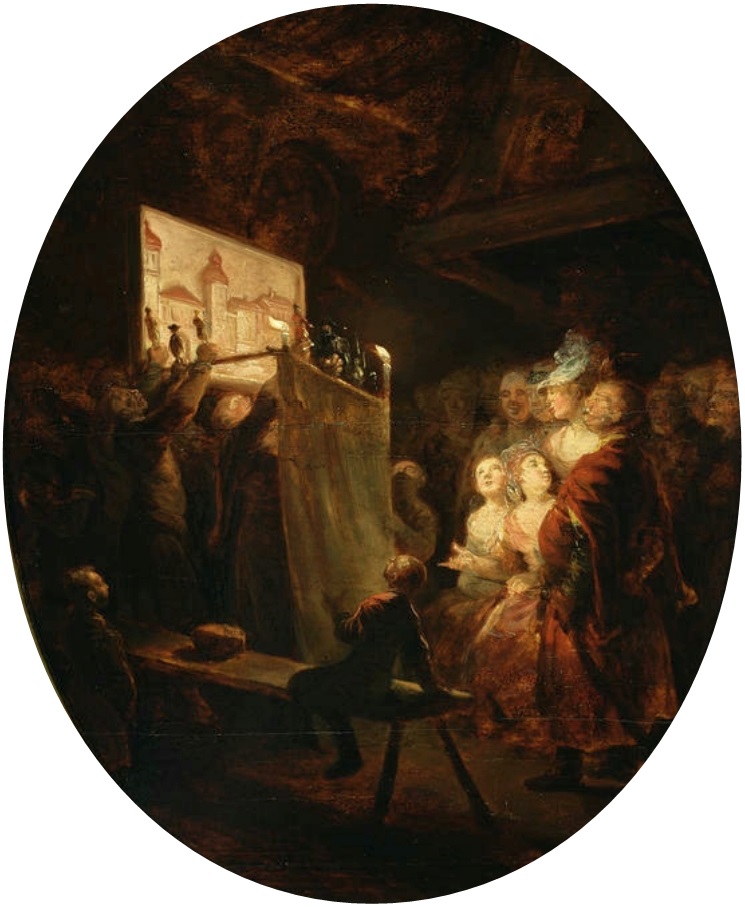|
Tablier De Sapeur
Tablier de sapeur (; literal meaning: sapper's apron) is a Lyonnais speciality dish make from beef tripe, specifically the ''gras-double'', which is the membrane of the rumen. It was formerly known as tablier de Gnafron (; literal meaning: Gnafron's apron); Gnafron is a marionette in Lyonnais puppetry. The tripe is boiled in a court-bouillon, marinated in white wine, then covered in breadcrumbs and fried. It is usually served with a sauce gribiche with chives added and steamed potatoes. Tablier de sapeur is one of the most common dishes in the bouchons of Lyon. The MarĂŠchal de Castellane, military governor of Lyon under NapolĂŠon III Napoleon III (Charles Louis NapolĂŠon Bonaparte; 20 April 18089 January 1873) was the first President of France (as Louis-NapolĂŠon Bonaparte) from 1848 to 1852 and the last monarch of France as Emperor of the French from 1852 to 1870. A nephew ... is often said to have been responsible for the change of name. References {{Lyon French cu ... [...More Info...] [...Related Items...] OR: [Wikipedia] [Google] [Baidu] |
France
France (), officially the French Republic ( ), is a country primarily located in Western Europe. It also comprises of Overseas France, overseas regions and territories in the Americas and the Atlantic Ocean, Atlantic, Pacific Ocean, Pacific and Indian Oceans. Its Metropolitan France, metropolitan area extends from the Rhine to the Atlantic Ocean and from the Mediterranean Sea to the English Channel and the North Sea; overseas territories include French Guiana in South America, Saint Pierre and Miquelon in the North Atlantic, the French West Indies, and many islands in Oceania and the Indian Ocean. Due to its several coastal territories, France has the largest exclusive economic zone in the world. France borders Belgium, Luxembourg, Germany, Switzerland, Monaco, Italy, Andorra, and Spain in continental Europe, as well as the Kingdom of the Netherlands, Netherlands, Suriname, and Brazil in the Americas via its overseas territories in French Guiana and Saint Martin (island), ... [...More Info...] [...Related Items...] OR: [Wikipedia] [Google] [Baidu] |
Court-bouillon
Court-bouillon or court bouillon (in Louisiana, pronounced ''coo-bee-yon'') is a quickly-cooked broth used for poaching other foods, most commonly fish or seafood. It is also sometimes used for poaching vegetables, eggs, sweetbreads, cockscombs, and delicate meats. It includes seasonings and salt but lacks animal gelatin. Description Court bouillon loosely translates as 'briefly boiled liquid' (French ''court'') or "short broth" because the cooking time is brief in comparison with a rich and complex stock, and generally is not served as part of the finished dish. Because delicate foods do not cook for very long, it is prepared before the foods are added. Typically, cooking times do not exceed 60 minutes. Although a court bouillon may become the base for a stock or fumet, in traditional terms it is differentiated by the inclusion of acidulating ingredients such as wine, vinegar, or lemon juice. In addition to contributing their own flavor, acids help to draw flavors from the ... [...More Info...] [...Related Items...] OR: [Wikipedia] [Google] [Baidu] |
Offal
Offal (), also called variety meats, pluck or organ meats, is the organs of a butchered animal. The word does not refer to a particular list of edible organs, which varies by culture and region, but usually excludes muscle. Offal may also refer to the by-products of milled grains, such as corn or wheat. Some cultures strongly consider offal as food to be taboo, while others use it as everyday food or even as delicacies. Certain offal dishesâincluding '' foie gras'', '' pâtĂŠ'', and haggis âare internationally regarded as gourmet food in the culinary arts. Others remain part of traditional regional cuisine and may be consumed especially during holidays. This includes sweetbread, Jewish chopped liver, U.S. chitterlings, Mexican menudo, as well as many other dishes. On the other hand, intestines are traditionally used as casing for sausages. Depending on the context, ''offal'' may refer only to those parts of an animal carcass discarded after butchering or skinning ... [...More Info...] [...Related Items...] OR: [Wikipedia] [Google] [Baidu] |
French Cuisine
French cuisine () is the cooking traditions and practices from France. It has been influenced over the centuries by the many surrounding cultures of Spain, Italy, Switzerland, Germany and Belgium, in addition to the food traditions of the regions and colonies of France. In the 14th century, Guillaume Tirel, a court chef known as "Taillevent", wrote ''Le Viandier'', one of the earliest recipe collections of medieval France. In the 17th century, chefs François Pierre La Varenne and Marie-Antoine Carême spearheaded movements that shifted French cooking away from its foreign influences and developed France's own indigenous style. Cheese and wine are a major part of the cuisine. They play different roles regionally and nationally, with many variations and ''appellation d'origine contrôlÊe'' (AOC) (regulated appellation) laws. Culinary tourism and the ''Guide Michelin'' helped to acquaint commoners with the ''cuisine bourgeoise'' of the urban elites and the peasant cuisine o ... [...More Info...] [...Related Items...] OR: [Wikipedia] [Google] [Baidu] |
NapolĂŠon III
Napoleon III (Charles Louis NapolĂŠon Bonaparte; 20 April 18089 January 1873) was the first President of France (as Louis-NapolĂŠon Bonaparte) from 1848 to 1852 and the last monarch of France as Emperor of the French from 1852 to 1870. A nephew of Napoleon I, he was the last monarch to rule over France. Elected to the presidency of the Second Republic in 1848, he seized power by force in 1851, when he could not constitutionally be reelected; he later proclaimed himself Emperor of the French. He founded the Second Empire, reigning until the defeat of the French Army and his capture by Prussia and its allies at the Battle of Sedan in 1870. Napoleon III was a popular monarch who oversaw the modernization of the French economy and filled Paris with new boulevards and parks. He expanded the French overseas empire, made the French merchant navy the second largest in the world, and engaged in the Second Italian War of Independence as well as the disastrous Franco-Prussian War, dur ... [...More Info...] [...Related Items...] OR: [Wikipedia] [Google] [Baidu] |
Boniface De Castellane
Esprit Victor Elisabeth Boniface de Castellane, ''comte de Castellane'' (21 March 178816 September 1862), was a French military officer and ultimately a Marshal of France. Early life He was a son of Boniface Louis AndrĂŠ de Castellane (1758â1837) and AdĂŠlaĂŻde Louise Guyonne de Rohan-Chabot (1761â1805), who was also known as Mademoiselle de Jarnac. After his mother's death, his father remarried, in 1810, to Alexandrine Charlotte de Rohan-Chabot (whose husband, Louis Alexandre, Duc de La Rochefoucauld, was killed during the September Massacres of the Reign of Terror). His paternal grandparents were Esprit François Henry, Marquis de Castellane and Louise Charlotte Armande Charron de MĂŠnars. His maternal grandparents were Charles Rosalie de Rohan-Chabot, Lord of Clion, Maroite and Brassac, joint-Lord of the castellanies of Montagrier and Chapdeuil, MarĂŠchal de camp (a son of Guy Auguste de Rohan-Chabot) and the former Guyonne Hyacinthe de Pons Saint-Maurice. His maternal ... [...More Info...] [...Related Items...] OR: [Wikipedia] [Google] [Baidu] |
Bouchon
A bouchon is a type of restaurant found in Lyon, France, that serves traditional Lyonnaise cuisine, such as sausages, coq-au-vin, "salade lyonnaise" duck pâtÊ or roast pork. Compared to other forms of French cooking such as ''nouvelle cuisine'', the dishes are quite hearty. There are approximately twenty officially certified traditional bouchons, but a larger number of establishments describe themselves using the term. Typically, the emphasis in a bouchon is not on ''haute cuisine'' but, rather, a convivial atmosphere and a personal relationship with the owner. History The tradition of bouchons came from small inns visited by silk workers passing through Lyon in the seventeenth and eighteenth centuries. According to the dictionary ''Le petit Robert'', this name derives from the 16th century expression for a bunch of twisted straw. A representation of such bundles began to appear on signs to designate the restaurants and, by metonymy, the restaurants themselves became ... [...More Info...] [...Related Items...] OR: [Wikipedia] [Google] [Baidu] |
Sauce Gribiche
' is a cold egg sauce in French cuisine, made by emulsifying hard-boiled egg yolks and mustard with a neutral oil like canola or grapeseed. The sauce is finished with chopped pickled cucumbers, capers, parsley, chervil and tarragon. It also includes hard-boiled egg whites cut in a julienne. Classically, ' may be served with boiled chicken, fish (hot or cold), calf's head, tripe, or cold terrine. Modern variations may see ' paired with vegetables, too, such as asparagus, charred lettuce or leeks, or even served as a dip. See also * Mayonnaise *Tartar sauce Tartar sauce (French: ''sauce tartare''; spelled tartare sauce in the UK, Ireland, New Zealand, Australia, Fiji, South Africa) is a condiment made of mayonnaise, chopped pickles and/or relish, capers, and herbs such as tarragon and dill. Tart ... Notes {{Reflist French sauces Egg-based sauces ... [...More Info...] [...Related Items...] OR: [Wikipedia] [Google] [Baidu] |
Marionette
A marionette (; french: marionnette, ) is a puppet controlled from above using wires or strings depending on regional variations. A marionette's puppeteer is called a marionettist. Marionettes are operated with the puppeteer hidden or revealed to an audience by using a vertical or horizontal control bar in different forms of theatres or entertainment venues. They have also been used in films and on television. The attachment of the strings varies according to its character or purpose. Etymology In French, ''marionette'' means "little Mary". In France, during the Middle Ages, string puppets were often used to depict biblical events, with the Virgin Mary being a popular character, hence the name. In France, the word ''marionette'' can refer to any kind of puppet, but elsewhere it typically refers only to string puppets. History Ancient times Puppetry is an ancient form of performance. Some historians claim that they predate actors in theatre. There is evidence that they we ... [...More Info...] [...Related Items...] OR: [Wikipedia] [Google] [Baidu] |
Lyon
Lyon,, ; Occitan: ''Lion'', hist. ''LionĂŠs'' also spelled in English as Lyons, is the third-largest city and second-largest metropolitan area of France. It is located at the confluence of the rivers RhĂ´ne and SaĂ´ne, to the northwest of the French Alps, southeast of Paris, north of Marseille, southwest of Geneva, northeast of Saint-Ătienne. The City of Lyon proper had a population of 522,969 in 2019 within its small municipal territory of , but together with its suburbs and exurbs the Lyon metropolitan area had a population of 2,280,845 that same year, the second most populated in France. Lyon and 58 suburban municipalities have formed since 2015 the Metropolis of Lyon, a directly elected metropolitan authority now in charge of most urban issues, with a population of 1,411,571 in 2019. Lyon is the prefecture of the Auvergne-RhĂ´ne-Alpes region and seat of the Departmental Council of RhĂ´ne (whose jurisdiction, however, no longer extends over the Metropolis of Lyo ... [...More Info...] [...Related Items...] OR: [Wikipedia] [Google] [Baidu] |
Rumen
The rumen, also known as a paunch, is the largest stomach compartment in ruminants and the larger part of the reticulorumen, which is the first chamber in the alimentary canal of ruminant animals. The rumen's microbial favoring environment allows it to serve as the primary site for microbial fermentation of ingested feed. The smaller part of the reticulorumen is the reticulum, which is fully continuous with the rumen, but differs from it with regard to the texture of its lining. Brief anatomy The rumen is composed of several muscular sacs, the cranial sac, ventral sac, ventral blindsac, and reticulum. The lining of the rumen wall is covered in small fingerlike projections called papillae, which are flattened, approximately 5mm in length and 3mm wide in cattle. The reticulum is lined with ridges that form a hexagonal honeycomb pattern. The ridges are approximately 0.1â0.2mm wide and are raised 5mm above the reticulum wall. The hexagons in the reticulum are approximately 2â ... [...More Info...] [...Related Items...] OR: [Wikipedia] [Google] [Baidu] |





.jpg)
